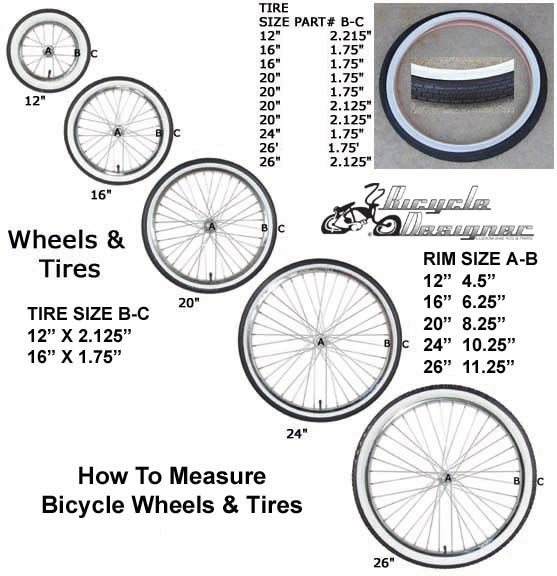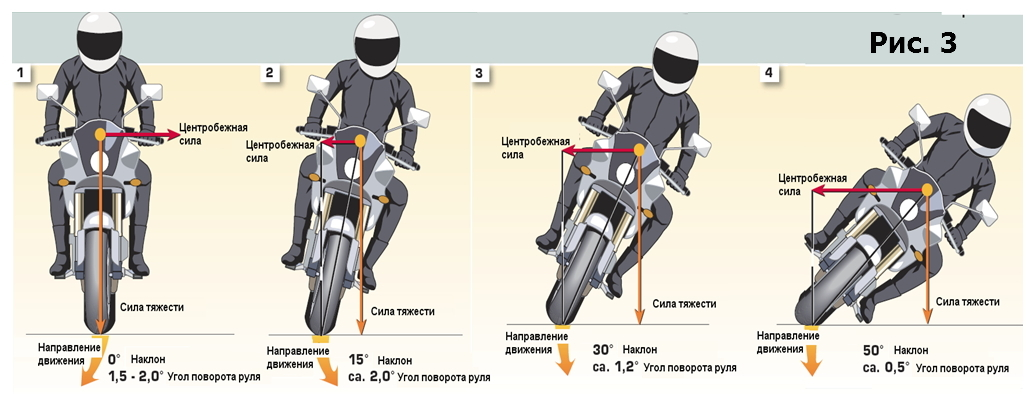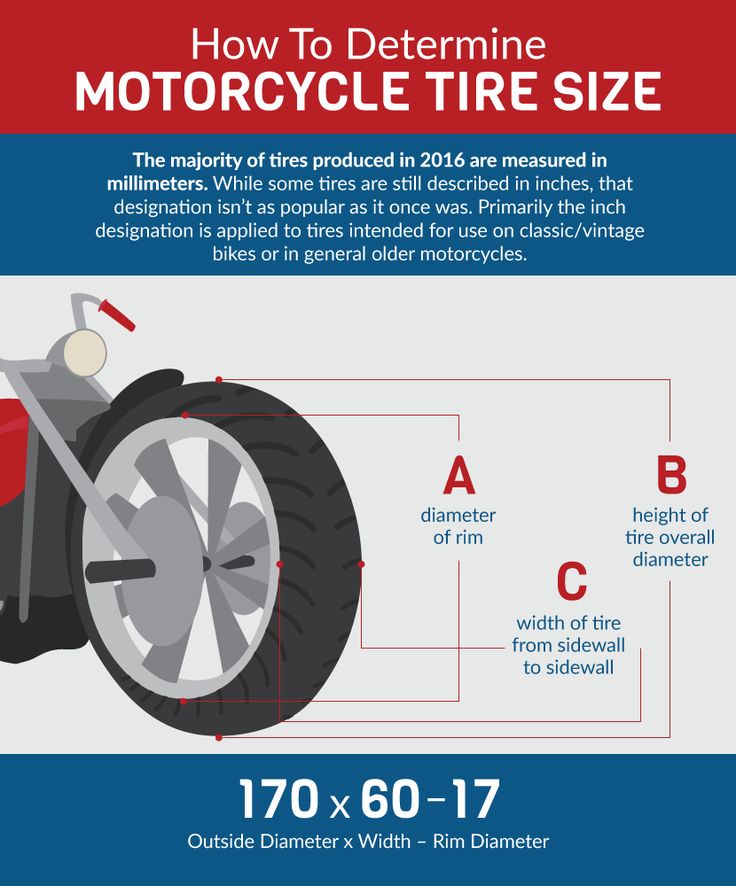Tips And Tech
Balance is key
By Mark Zimmerman
May 11, 2016Whenever a new tire is mounted, the wheel should be dynamically balanced. However, if you’re doing it yourself that might not always be an option. Here’s the quick and dirty way to static balance your wheels.
Make sure the wheel is free to spin with no drag on it, if you're balancing the front wheel, you can usually just unbolt the caliper(s) and, if need be, the speedometer cable. If it's the rear tire, you'll have to remove the chain or belt as well. If you've got a shaft, or it's too much hassle to remove the rear drive, you'll need to build or buy a balance stand to support the rear wheel. With a little imagination a serviceable one can be carved out of 2x4s or angle iron.
Allow the wheel to rotate slowly pulled only by its own weight. If it won't move on its own, rotate it 90 degrees. If it still won't rotate it's either in balance or there's some drag on it.
Assuming it's not in balance and there's no drag on it, give it a light spin, the wheel doesn't have to complete a dozen revolutions, put it should rotate a time or two. The wheel should come to rest with the heaviest spot at the bottom. Most of the time this will be the valve stem portion of the tire.
Mark that portion of the tire with a crayon for reference and recheck it, if the same spot returns to the bottom you're ready to add weight. If it doesn't repeat the test, if a different spot comes to the bottom each time, the wheel is in balance.
Add some weight to the spot opposite your heavy spot, how much takes some feel. If the wheel moved very slowly towards the heavy spot maybe a 1/4 of an ounce, if it moved quickly maybe 3/8 to a half. You can use solder, stick on or spoke type weights. If you use stick on weights use some masking tape to hold the weight in place until you're sure it's the correct amount, before permanently sticking it to the rim.
Repeat step #4, if the wheel returns to the heavy spot add a little more weight to the light spot. If it comes to rest at the original light spot remove a little weight. If it comes to rest at a random spot, retest. If it comes to rest in a random spot each time or if it'll stay in any given position you place it in (presuming there's no drag), then it's in balance.
By the way, because their balance is affected by the driveline, rear wheels, are as a rule somewhat less sensitive to balance. I'm not saying you shouldn't balance the rear, but I am saying it's not quite so crucial a matter as the front if it's not perfect.
Tips And Tech
How To Be a Woman in a Motorcycle Dealership, a Guide
Tips And Tech
5 Questions to Ask Before Buying a Used Motorcycle
Tips And Tech
Tips on Installing a Helmet Communication System
Tips And Tech
How to Prepare Your Motorcycle for Winter Storage
Tips And Tech
All the Motorcycles Offering Apple CarPlay and Android Auto
Mar 21, 2017 at 1:00am ET
By: Panhead Jim
In my last article, How To Change Motorcycle Tires, I covered how to remove and replace a motorcycle tire. If you are replacing your own tires, you probably will be interested in balancing them yourself as well and this article will guide you through the process. Like mounting your own tires, balancing is easy to do and requires only minimal tools. I will cover a technique known as "static balancing" which relies on gravity to find the heavy spot on your wheel. Most people are more familiar with the other balancing technique refered to as "dynamic balancing" which uses a machine to spin the tire at high speeds to determine balance. Unless you are planning on opening a tire shop, you probably will not want to spend the money on a dynamic balancing machine or devote the floor space to one for just changing your own tires.
If you are replacing your own tires, you probably will be interested in balancing them yourself as well and this article will guide you through the process. Like mounting your own tires, balancing is easy to do and requires only minimal tools. I will cover a technique known as "static balancing" which relies on gravity to find the heavy spot on your wheel. Most people are more familiar with the other balancing technique refered to as "dynamic balancing" which uses a machine to spin the tire at high speeds to determine balance. Unless you are planning on opening a tire shop, you probably will not want to spend the money on a dynamic balancing machine or devote the floor space to one for just changing your own tires.
As you can see from the picture, there isn't much to a static balancer, just a frame and a horizontal shaft for the wheel to rotate on. If you like doing a little bit of light fabrication, you can certainly build one yourself and can even use your own axle for a perfect fit. For everyone else, you can pick up a factory made stand for ~$100 online. These factory made stands are made "universal fit" by using a small diameter shaft with two cones that fit into the axle sleeve on either side of the wheel. Once the cones are locked down to the shaft with a set screw, the wheel is centered on the shaft and ready to be balanced.
For everyone else, you can pick up a factory made stand for ~$100 online. These factory made stands are made "universal fit" by using a small diameter shaft with two cones that fit into the axle sleeve on either side of the wheel. Once the cones are locked down to the shaft with a set screw, the wheel is centered on the shaft and ready to be balanced.
READ MORE: How to Change Your Motorcycle Oil | RideApart
Since you typically only balance motorcycle wheels after installing new tires, I'll assume you already have the wheel off of the motorcycle and go straight into the balancing process.
Step 1: Make sure that your balancer is sitting on a stable surface and the shaft is level. I find that a standard 9" magnetic level makes this process a whole lot easier.
Step 2: Remove one of the cones from the balancer's shaft before sliding the shaft through the axle sleeve on the wheel. Then slide the cone back onto the shaft (narrow end first) and firmly tighten the set screw to lock it in place. It is important to make sure that both cones are fitting inside the axle sleeve, if not the wheel will not be centered on the shaft which can effect the balance.
Then slide the cone back onto the shaft (narrow end first) and firmly tighten the set screw to lock it in place. It is important to make sure that both cones are fitting inside the axle sleeve, if not the wheel will not be centered on the shaft which can effect the balance.
Step 3: Thoroughly wipe down the rim with a good degreaser. This is important for two reasons: first you don't want any globs of grease throwing off your balance and secondly if you are using adhesive wheel weights you want to make sure that they stick on well. Also, if there are any remaining weights from previous balancing, make sure to remove them.
Step 4: Gently spin the tire and let it come to a stop on its own. Gravity will cause the tire to stop spinning with the heaviest portion at the lowest point. Take a piece of masking tape and mark this point on the rim. Simple Green is an excellent way to clean off any dirt, grime or grease from your wheel.
If the heaviest portion of the wheel is at the lowest point, then it stands to reason that the lightest portion of the wheel is at the highest point. Therefore you will be adding weights to the top of the wheel, directly across from the heaviest portion. Adding a piece of tape makes it easy to remember the location of the heaviest point on the wheel. If you are using a non-spoked rim, your best option for weights is the adhesive backed variety that just stick to the rim. These are cheap and easy to use and allow to you spread the weight out on either side of the rim. If you are using a spoked rim, you also have the option of spoke weights with crimp to the spokes or are held to the spoke with a set screw. These tend to be more expensive than the adhesive backed weights, but they do have the advantage of being reusable and less likely to come off.
Step 5: Add a few oz's of weight to the lightest portion of the tire. If you are using adhesive backed weights, use tape to hold them in place temporarily. Adhesive backed weights come in strips that can be cut apart to achieve the desired weight. Spoke wheel-weights come in various weights and can be stacked if needed.
Adhesive backed weights come in strips that can be cut apart to achieve the desired weight. Spoke wheel-weights come in various weights and can be stacked if needed.
Step 6: Rotate the tire until the lightest portion and the heaviest portion are located equal distance from the work surface and gently release the wheel. Again the wheel will naturally rotate to a position where the heaviest portion is at the lowest point. Typically this will be the same point that you determined was the heaviest portion of the wheel initially, which means you need to add more weight to the lightest portion. Alternatively if the portion you just added weight too is now at the lowest point, then you added too much weight and need to remove some. Using double-stick tape or masking tape to temporarily hold the weights in place during this process.
Step 7: Continue to repeat Step 6 until the wheel no longer rotates on its own when released. A properly balanced tire should stay still when released as there is not a heavier portion to pull the wheel around. When you think you have the balanced correctly, try rotating and releasing the wheel (using the tape as a guide) at the 12:00, 3:00, 6:00 and 9:00 positions.
A properly balanced tire should stay still when released as there is not a heavier portion to pull the wheel around. When you think you have the balanced correctly, try rotating and releasing the wheel (using the tape as a guide) at the 12:00, 3:00, 6:00 and 9:00 positions.
Step 8: If you are using spoke weights, you are now finished balancing your wheel and can remove it from the balancer. If you are using adhesive backed weights, use a piece of tap to mark the edge of the line of weights before removing whatever is temporarily holding the weights in place. Then simply remove the backing paper from the weights and press them firmly onto the rim to hold them in place. A balanced tire should stay still when released no matter what position it is in.
One thing to keep in mind is that it is pretty tough to get your wheels perfectly balanced since wheel weights come in fixed sizes that may not add up to the weight you need. Of course you could file the weights down to achieve the exact weight, but I don't think you'll notice much difference on the road to make it worthwhile unless you plan on running at high speeds in a race type scenario. At that is left now is to remount the wheel as per the manufacturer's instructions and go out for a test ride.
At that is left now is to remount the wheel as per the manufacturer's instructions and go out for a test ride.
Professional drivers are well aware that high-quality and correct balancing of motorcycle wheels significantly reduces the pressure on the undercarriage, reduces wheel and tire wear, and also creates a comfortable feeling of softness during the trip and stabilizes contact with the asphalt surface.
Modern bikes are high-tech vehicles with powerful and dynamic characteristics that far exceed the capabilities of a conventional car.
Experienced motorcyclists always take into account the fact that the condition of the wheels affects not only the adrenaline feeling of piloting, but, above all, safety. A large load on the suspension with constant use of motorcycles and an aggressive driving style contribute to damage to the motorcycle tire, which can lead to unpleasant situations on the road. Therefore, motor balancing is an indispensable part in wheel maintenance and in replacing an old worn tire with a new one.
Therefore, motor balancing is an indispensable part in wheel maintenance and in replacing an old worn tire with a new one.
Motoshinomontazh "sm24" offers quality services for motobalancing in Moscow and the Moscow region. You can find the addresses of sm24 network centers on the company's website.
Tire fitting "sm24" in CJSC can quickly and efficiently carry out motor balancing. Thanks to modern HOFMAN equipment, together with the Haweka system, our specialists can balance any type of wheels of all brands of motorcycles.
When mounting the wheels, safety beams, motor stands and motor jacks are used, which ensures high safety and stability of the motorcycle during all work.
Two types of wheel balancing are used in tire fitting:

Motor balancing must be done after tire fitting or when the front wheel is beating, because rear wheel wobble is almost imperceptible. It is important to check the integrity and runout of the rim during tire fitting. If the disk is damaged or broken, balancing should be postponed until the end of the disk repair.
Motor balancing is carried out in several stages:
Motorcycle wheels are balanced every 2000 - 3000 km. The wheels of off-road and large bikes should also be regularly balanced, as poor road quality and tread wear lead to a gradual deterioration in wheel balance.
SM24 motorcycle balancing will keep your suspension in good condition for a long time, prevent premature tire wear and give you incredible sensations and feelings of comfort while driving a motorcycle.
At sm24 you will find all kinds of services that ensure the safe, high-quality operation of your bike wheels and other systems. Also here you can remove the wheels yourself using our tools for free, when ordering balancing and beading from us.
After watching this video, you will learn how motor balancing is performed:
Podolsk,
15 km Simferopol highway To contacts
#maintenance
8 years ago
Wheel static balancing must be done after tire fitting. When mounting a tire, it is advisable to check the integrity and runout of the disk. If the disc is damaged or deformed, it must be repaired before balancing. For balancing, it is necessary to hang the wheel on a horizontal, freely rotating axle. For this, it is convenient to use a special stand. The wheels are balanced with inflated tires and brake discs. The rear wheel is sometimes also balanced with a star if it is rigidly attached to the disk (for exact information, see the manual of the specific motorcycle model).
When mounting a tire, it is advisable to check the integrity and runout of the disk. If the disc is damaged or deformed, it must be repaired before balancing. For balancing, it is necessary to hang the wheel on a horizontal, freely rotating axle. For this, it is convenient to use a special stand. The wheels are balanced with inflated tires and brake discs. The rear wheel is sometimes also balanced with a star if it is rigidly attached to the disk (for exact information, see the manual of the specific motorcycle model).
1) Rock the wheel. When it stops, the heaviest point of the wheel will be at the bottom (point X1).
2) Rotate the wheel 90 degrees and release. Make sure point X1 is in the same place. If it is displaced, do the operation several times to select the middle position. This happens if the disk is warped.
3) Set the weight against the heaviest point X1. It is better to start with the smallest and stick it not completely, so that it is easier to remove.
4) Turn the wheels 90 degrees and release. If the load will return upward, then the point X1 outweighs it, and the load must be added. Add weights until the wheel moves through a 90 degree turn.
5) If the wheel is static (does not move) in various positions, remove the test weights and glue new ones after degreasing the surface. It is ideal to use weights on the central edge of the disc (for spoked wheels - weights on the spokes), but we do not sell such weights. Therefore, it is necessary to glue the loads symmetrically on both sides of the disk.
6) If the wheel is not static in some positions, it is recommended to re-balance from scratch. The reasons may be that the wheel is not rigidly fixed on the axle; the disk or rubber is deformed; rubber is not installed coaxially with the valve; bearings are heavily worn; if the wheel is spoked, it may have dynamic runout due to poorly stretched spokes.
The video shows the process more clearly! The front wheel from the BMW K1100LT has a slight dent, but that didn't stop it from achieving static balance.